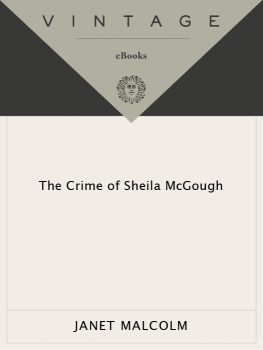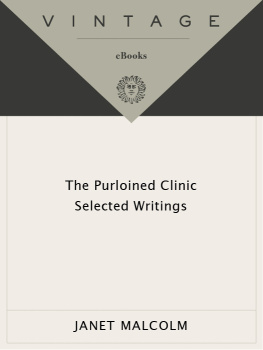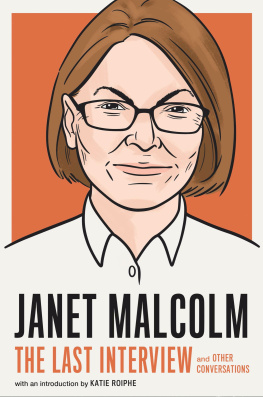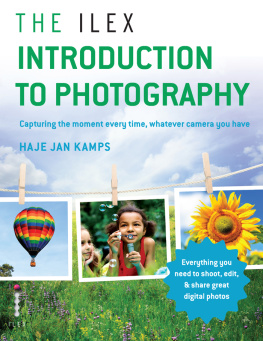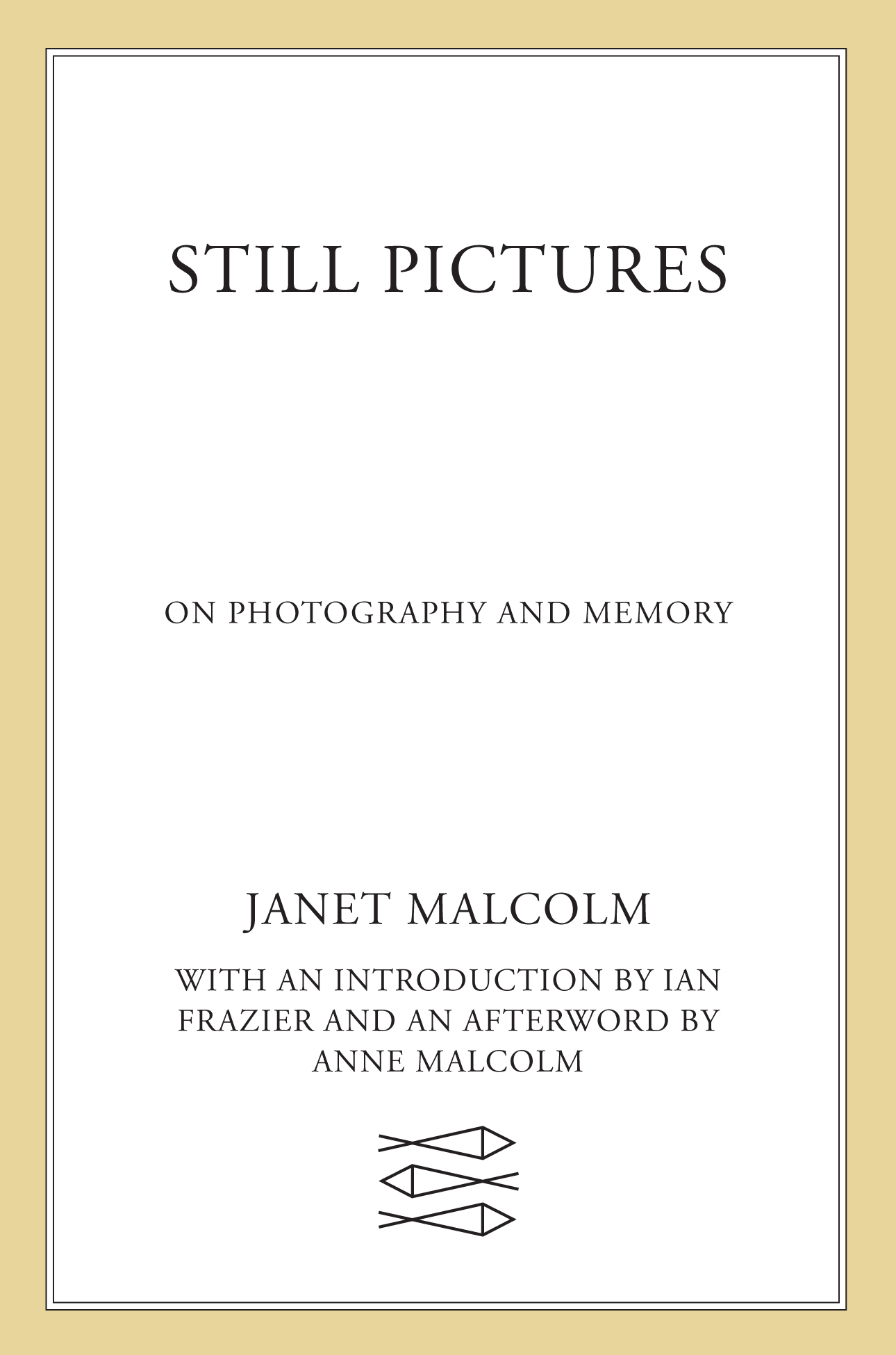Contents
Guide
Pagebreaks of the print version
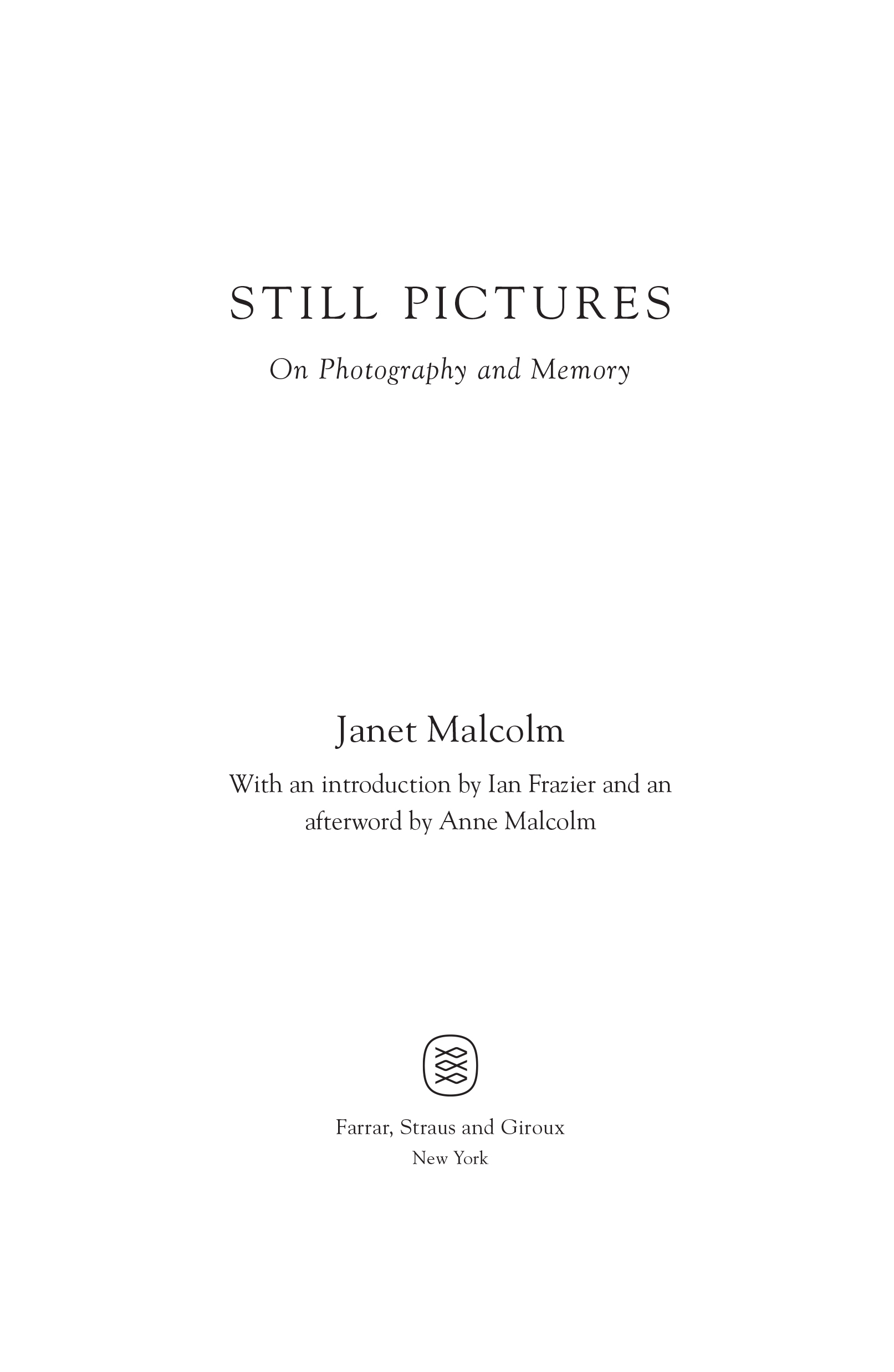
The author and publisher have provided this e-book to you for your personal use only. You may not make this e-book publicly available in any way. Copyright infringement is against the law. If you believe the copy of this e-book you are reading infringes on the authors copyright, please notify the publisher at: us.macmillanusa.com/piracy.
BY IAN FRAZIER
The first photo of herself that Janet Malcolm includes in this book shows her at the age of two or three wearing a hat and a sunsuit and sitting on a stone step. She writes that she doesnt identify with the child in the photo or think of the child as herself. The viewer who is also the reader has a different reaction. The little girl is obviously a person for whom the world will be grateful in her grown-up lifea future personage whose extraordinary nature the camera has caught in early childhood. Even without that aspect of prophecy, the photo arrests us because the little girl is adorable.
Janet Malcolm wrote nonfiction like no one else, won a wide and devoted readership, knew the stark difference between delight and whatever isnt delight, and made some people angry with the straightforwardness and occasional asperity of her work. After she and I became friends, and Id noticed that picture among others on the wall in her apartment, I saw that small personage as a still-surviving part of her. I adored her and told her so not long before she died. Coming home on the train, I kept wincing at having blurted such a risky and uncool thing, and I even wince a little describing it now. But Im also glad I said it because its true, and I imagine her accepting it for that reason, and not seeing it as too over the top.
As Im writing this, her death is about ten weeks in the past, so I probably dont have the distance one would hope for in surveying anybodys work. On a Friday, I was talking to her on the phone, as wed done many times over the twelve years of our friendship (if we didnt talk, we exchanged emails almost every day), and a few days later, on a Wednesday, she was gone. My sense of carrying on an interrupted conversation with my suddenly absent friend remains so strong, it makes me believe even more that something must exist beyond death. E. B. White once said that a writer writes until he dies. In my now one-sided conversation with Janet, Im wondering if the writer (in this case, she) stops even then. She had good ideas for pieces whose energy may still be carrying her along, wherever she is in time-space or space-time, thinking about them. For thirty or forty years she listened to the same classical music program on a New York City radio station, with the same host, a woman. She liked the host, had learned some details of her personality over the years, and came up with the idea of writing a profile of this person without saying (or even trying to find out) what the person looked like. The point would be to fit the profile within the pandemics imposed conditions of apartness; she would concentrate entirely on the voice, maybe filled in with some reportorial phone calls. As Janet got sicker and could not do much except lie on the couch, she told me she had thoughts about helplessness, solitude, and the end of life that could make another good piece. I could see that the piece already existed in roughed-out form in her mind, full of possibility. She never wrote it, or even made notes for it, as far as I know. But I believe the piece still exists somewhere and is somehow ongoing.
In this book are the last pieces Janet gave us. They exist outside of any simple category. She distrusted biography as a form and had a lot of skepticism about autobiography. In The New York Review of Books in 2010 she published a short piece in which she listed a few of the hazards involved in writing about oneself, such as the desire to seem like an interesting person, or the conflict between self-love and journalistic objectivity.
She also happened to be a good visual artist and knew about photography from her own experience of taking photos. She and I used to send each other pictures of so-called weeds. She did not believe in the concept of weeds, and supported me in my maintaining a badthat is, weed-filledlawn in the suburb where I live. Her photos of weeds looked wild and raucous and fabulous. Mine looked like weeds. Recently I read about a gardener who said how horrible burdock is. Burdock is the large-leafed, disturbed-earth plant whose burr-covered seedpods often end up in your dogs hair and seem to have provided the structural model for the coronavirus. Janet took hundreds of photos of burdock leavesthey get eaten by insects, and decay interestingly, and suggest other beleaguered leaves: ancient or recent manuscript pages, for instanceand she made a book of twenty-nine of the photos, called Burdock. In a short introduction she said she was trying to portray individual burdock leaves as clearly and as cruelly as Richard Avedon photographed individual human beings. Her effort succeeded; each burdock leaf is a life, seen straight on, epic and battered and dignified.
The main visual form she worked in was the collage. Among the hundreds of collages she made, some appeared in gallery shows in New York, and now hang on collectors walls. She also loved assembling bookmarks, her favorite kind of collage. I have fifty or seventy bookmarks she made and sent me. I use her bookmarks in most books I read, which means that now I cant find them all. In some future century, one or two of Janets bookmarks will fall out from between a books pages in the shop of an antique-book dealer and amaze their re-discoverer. The bookmark collages bring together papers from her fathers psychiatric practice, Chinese Communist propaganda leaflets, Soviet hotel DO NOT DISTURB signs, strange newspaper clippings, World War II ration stamps, Muybridge motion-capture photo sequences, reproductions of classic paintings, her grade-school report cards. She color-xeroxed the components and reduced them to bookmark size and fit them together. As readers of this collection will observe, she had a knack for choosing which ephemera to save.
She didnt describe the pieces in this collection as memoirs or autobiographical sketches; I recall her referring to them only by topic. Whatever theyre called, she came to them through photographs, by way of her visual-artist side. That approach freed her. I had read all the pieces before seeing them assembled here, and on rereading, Im surprised and sometimes saddened by what Id missed. Her description of her family escaping the Nazis like insects who happened to avoid the insect spray rattled me, but now I see how deeply she meant and felt the horror of the image. Their wartime experience never gave her family psychological peace. Her second husband, Gardner Botsford, who went ashore on D-Day, also was in a unit that liberated a concentration camp. He never talked about that experience, nor did he include it in the book in which he tells other parts of his war service. When he became Janets editor at The New Yorker, her work opened out dramatically. I knew Gardner as an elegant and gallant man and a careful, intuitive editor. She may have seen him, at an emotional level, as her heroic American rescuer.
I admired the brilliant humor that ran through her life and work, but I hadnt understood it for the bedrock it was. Her sense of what was funny and her love of being a smart aleck exist in early form even in the photo of her sitting on the step. In one of these pieces, she describes telling her aunt and uncle and cousin every dirty joke she knew while on a car trip when she was a teenager. I was a smart-aleck teen myself, but telling dirty jokes to my uncle and aunt would have been a stretch, and Im in awe of her dedication. At the University of Michigan, she and her first husband, Donald Malcolm, wrote for a humor magazine called


